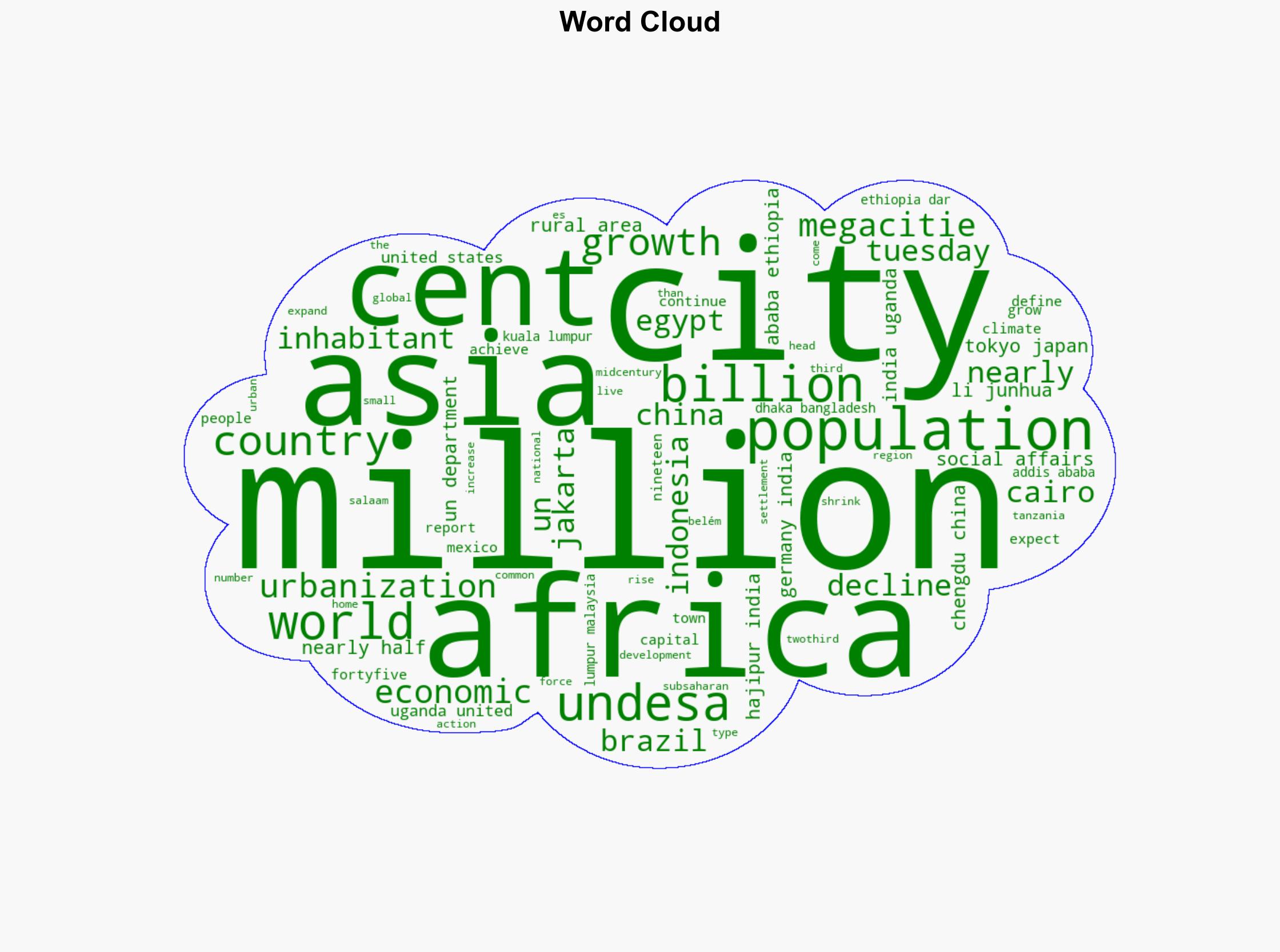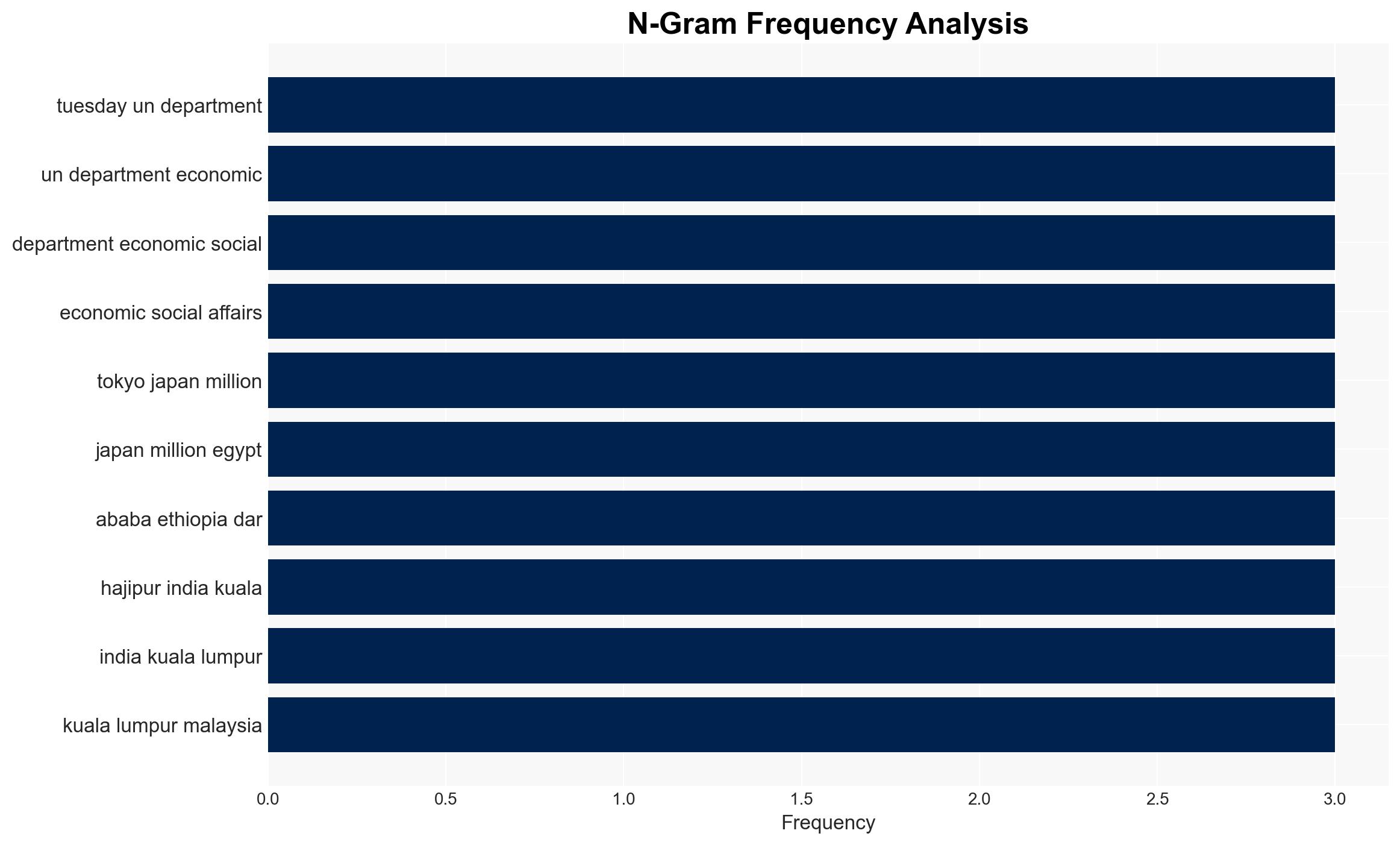Cities now home to nearly half of humanity UN report – UN News
Published on: 2025-11-18
AI-powered OSINT brief from verified open sources. Automated NLP signal extraction with human verification. See our Methodology and Why WorldWideWatchers.
Intelligence Report: Urbanization Trends and Strategic Implications
1. BLUF (Bottom Line Up Front)
Urbanization is accelerating, with nearly half of humanity now residing in cities. This trend is expected to continue, with significant implications for sustainable development and climate resilience. The most supported hypothesis is that urbanization, if managed strategically, can unlock pathways for economic growth and social equity. Confidence Level: Moderate. Recommended action includes developing integrated national policies that align urban and rural development to harness urbanization’s potential while mitigating associated risks.
2. Competing Hypotheses
Hypothesis 1: Urbanization will drive economic growth and social equity if managed inclusively and strategically.
Hypothesis 2: Unmanaged urbanization will exacerbate socio-economic disparities and environmental degradation.
Hypothesis 1 is more likely due to the potential for urban centers to act as hubs for innovation, economic activity, and social integration. However, this is contingent on effective governance and policy implementation.
3. Key Assumptions and Red Flags
Assumptions: Urbanization will continue at the projected rate; governments will have the capacity and willingness to implement strategic policies.
Red Flags: Lack of infrastructure investment, political instability, and inadequate policy frameworks could hinder positive outcomes.
Deception Indicators: Overstated government commitments to sustainable urban development without actionable plans.
4. Implications and Strategic Risks
Urbanization presents both opportunities and risks. If managed well, it can lead to economic growth and improved living standards. However, unmanaged growth could lead to overcrowding, resource depletion, and increased socio-economic divides. Politically, urban centers may become hotspots for unrest if disparities are not addressed. Economically, cities could drive innovation but also face challenges in infrastructure and resource management.
5. Recommendations and Outlook
- Develop and implement integrated urban-rural development policies.
- Invest in infrastructure and public services to support growing urban populations.
- Encourage public-private partnerships to foster innovation and economic growth.
- Best Scenario: Urbanization leads to sustainable economic growth and improved social equity.
- Worst Scenario: Unmanaged urbanization results in economic stagnation and increased socio-economic divides.
- Most-likely Scenario: Mixed outcomes with both growth and challenges, dependent on policy effectiveness.
6. Key Individuals and Entities
Li Junhua, Head of UNDESA
7. Thematic Tags
Regional Focus, Urbanization, Sustainable Development, Economic Growth, Social Equity, Infrastructure, Policy Implementation
Structured Analytic Techniques Applied
- Causal Layered Analysis (CLA): Analyze events across surface happenings, systems, worldviews, and myths.
- Cross-Impact Simulation: Model ripple effects across neighboring states, conflicts, or economic dependencies.
- Scenario Generation: Explore divergent futures under varying assumptions to identify plausible paths.
Explore more:
Regional Focus Briefs ·
Daily Summary ·
Support us





